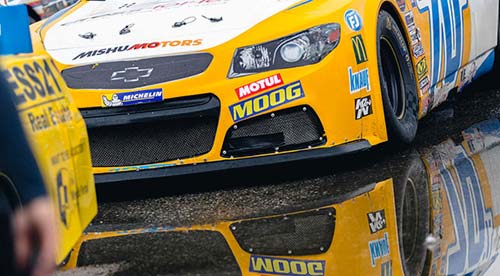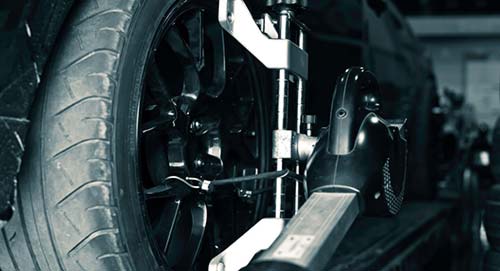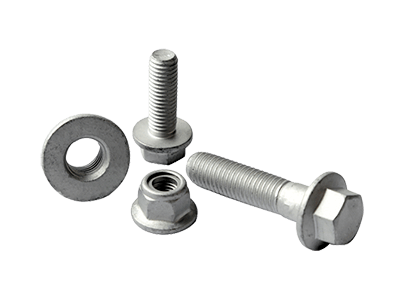As a NASCAR® Insider, you've already seen how the tyres and wheels on NASCAR® race cars are checked after each and every race. These checks include ensuring the wheels are aligned consistently with each other and optimised for maximum contact with the road surface.
However, there are some differences between how the wheels should be oriented (i.e. camber, caster and toe) for your private car and for a NASCAR® race car. In fact, these differences go one step further in NASCAR®, as wheel orientation changes depending on the type of track the race takes place on.
NASCAR® track secrets
Before we go any further, here's a quick reminder of what camber, caster and toe are:
- Camber: negative camber helps increase grip, especially during heavy cornering. Zero camber wears the tyres more evenly, but doesn't perform as well in corners.
- Caster: positive caster helps stabilise the vehicle at high speeds, increasing tyre lean when cornering and increasing steering efforts.
- Toe: negative toe or toe-out increases cornering ability, with the inner wheel angled more aggressively into the turn. The smaller turning radius of the inner wheel, pulls the vehicle into the turn. However, this decreases straight line stability. Positive toe or toe-in is ideal for long, straight driving with few or gentle turns.
Oval track racing
Driving on an oval track is unlike any other NASCAR® track (or on the road in your private car). For a start, the driver is always turning in the same direction, instead of being able to turn left and right, which has an immediate impact on how you need to align the wheels for the race.
In a NASCAR® oval race, the race cars only make left turns. This means the right wheels are always on the outside of a turn, so NASCAR® mechanics use negative camber on them. The left hand wheels are on the inside of the turn, so they use positive camber. Combining positive and negative camber gives the ideal cornering solution for an oval track, maximising cornering speed and optimising grip and stability turning the turn.
The next issue to consider is the angle to use. This depends on a few different factors, such as if the track is banked (i.e. sloping inward at the corners), and it can be difficult to find the right balance.
To use the Euro NASCAR® Oval World Challenge as an example, the track in Tours is banked at a 9° angle, so the race cars don't need too much camber. However, finding the right amount of camber is challenging. Too little and the driver won't benefit from the differing cornering circles from the left and right hand wheels. And too much and the driver won't have as much grip when driving straight, reducing acceleration and braking power when the car isn't turning. Excessive camber also wears on the lower edges of the race car's tyres when driving straight, which can cause blowouts.
So, is it better to be cautious with camber or to throw caution to the winds? We will see in the NASCAR® Oval World Challenge in Tours on June 30 and July 1. Are you ready for the excitement to begin?
NASCAR® Insiders
Continue the journey with NASCAR® Insiders.
Discover the world of NASCAR® Insiders and get the inside track to exclusive behind the scenes content, exciting interviews with NASCAR® legends and visionaries and so much more. Read more here.



